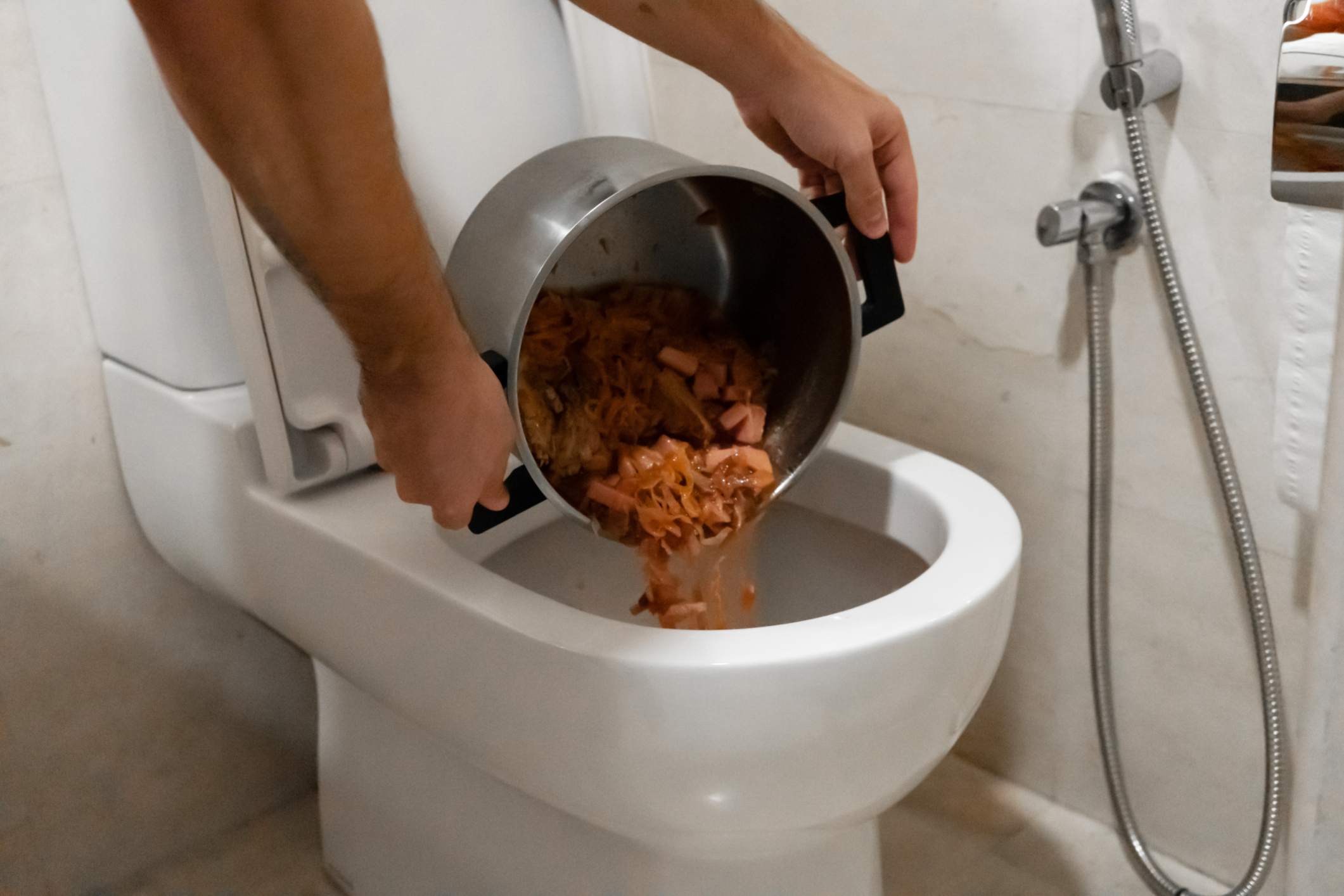The content further down involving Think Twice Before Flushing Food Down Your Toilet is unquestionably intriguing. You should check it out.

Introduction
Many individuals are often faced with the predicament of what to do with food waste, especially when it pertains to leftovers or scraps. One common question that arises is whether it's fine to flush food down the toilet. In this article, we'll look into the reasons people may take into consideration purging food, the repercussions of doing so, and alternative techniques for proper disposal.
Reasons that individuals might take into consideration flushing food
Lack of understanding
Some people may not understand the possible harm caused by flushing food down the toilet. They may incorrectly believe that it's a safe practice.
Comfort
Flushing food down the bathroom might feel like a quick and easy option to dealing with unwanted scraps, particularly when there's no neighboring trash bin available.
Negligence
In many cases, people might simply choose to flush food out of sheer negligence, without considering the effects of their actions.
Repercussions of flushing food down the bathroom
Environmental effect
Food waste that winds up in rivers can add to air pollution and damage aquatic ecological communities. Additionally, the water used to flush food can strain water sources.
Plumbing concerns
Flushing food can cause clogged pipelines and drains, causing costly plumbing repair services and inconveniences.
Types of food that should not be purged
Fibrous foods
Foods with coarse structures such as celery or corn husks can get entangled in pipes and create blockages.
Starchy foods
Starchy foods like pasta and rice can absorb water and swell, leading to clogs in pipes.
Oils and fats
Greasy foods like bacon or food preparation oils should never ever be flushed down the bathroom as they can strengthen and create obstructions.
Proper disposal techniques for food waste
Making use of a garbage disposal
For homes equipped with garbage disposals, food scraps can be ground up and flushed with the plumbing system. Nevertheless, not all foods are suitable for disposal in this way.
Recycling
Particular food product packaging products can be reused, decreasing waste and minimizing environmental effect.
Composting
Composting is an eco-friendly means to get rid of food waste. Organic materials can be composted and used to enhance soil for gardening.
The relevance of proper waste management
Lowering ecological damage
Correct waste management methods, such as composting and recycling, aid decrease contamination and maintain natural resources for future generations.
Safeguarding pipes systems
By staying clear of the technique of flushing food down the commode, house owners can prevent costly plumbing repairs and keep the integrity of their plumbing systems.
Conclusion
To conclude, while it may be alluring to flush food down the commode for convenience, it is essential to comprehend the potential consequences of this activity. By adopting proper waste management methods and getting rid of food waste properly, people can contribute to much healthier plumbing systems and a cleaner atmosphere for all.
FLUSH FOOD DOWN THE TOILET?
FLUSHING FOOD CAN CAUSE BLOCKED DRAINS IN YOUR HOME
All of the plumbing fixtures in your home are connected to the same sewer pipe outside of your home. This outdoor sewer pipe is responsible for transporting all the wastewater from your home to the Council sewer mains. Even small pieces of food that go down the kitchen sink can cause problems for your sewer. It should therefore be obvious that flushing larger bits of food, such as meat, risks a clog in either the toilet itself or the sewer pipes. Flushing greasy food is even more problematic because oil coagulates when it cools, coating the interior lining of your pipes.
THE TOILET IS NOT A BIN
Food isn’t the only thing that people shouldn’t be flushing down the toilet. People use the toilet to dispose of all kinds of things such as tampons, makeup wipes, dental floss, kitty litter and even underwear. Water goes to great lengths to educate residents about the high costs and stress placed on wastewater treatment systems simply from people flushing the wrong stuff down the toilet. It costs taxpayers millions of dollars each year, and homeowners thousands in blocked drain repairs.
FLUSHING FOOD IS A WASTE OF WATER
Flushing food is a waste of our most precious resource - water. In June this year Level 1 water restrictions were introduced to protect water supply from drought conditions. Much of New South Wales continues to be affected by prolonged drought with recent figures revealing up to 97 per cent of the state remains in drought. Depending on whether you have a single or dual flush toilet, every single flush uses between five and 11 litres of water. In the current climate this is a huge amount of water to be wasting on flushing food that should be placed in the bin (or better yet, the compost).
https://www.jabplumbingsolutions.com.au/blog/can-you-flush-food-down-the-toilet

Do you really like reading up on Think Twice Before Flushing Food Down Your Toilet? Leave feedback below. We will be happy to see your opinion about this entry. We are looking forward that you come back again later on. Enjoyed our piece? Please share it. Let another person find it. I praise you for being here. Come back soon.
Click Here